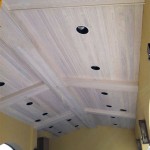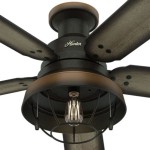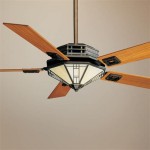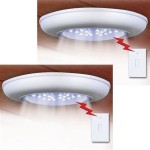```html
How To Insulate A Garage Ceiling: A Comprehensive Guide
Insulating a garage ceiling is a significant home improvement project that offers a multitude of benefits. It can drastically improve energy efficiency, making the garage and any rooms above it more comfortable year-round. Furthermore, it helps reduce noise transmission and can even deter pests. This article provides a detailed guide on how to properly insulate a garage ceiling, covering essential preparation steps, material selection, and installation techniques. The process requires careful planning, attention to detail, and adherence to safety precautions to ensure a successful and effective outcome.
Before embarking on this project, it is crucial to understand the specific needs of the garage and the goals for the insulation. Is the primary aim to regulate temperature, reduce noise, or both? Understanding these factors will guide the selection of the appropriate insulation material and installation method. Additionally, verifying local building codes is essential to ensure compliance with regulations regarding insulation R-values, fire safety, and vapor barrier requirements. Failure to comply with these codes can result in fines or the need to redo the project.
Key Considerations Before You Begin
Prior to initiating the insulation process, a thorough assessment of the garage ceiling is required. This includes inspecting the existing structure for any signs of damage, such as water leaks, mold growth, or structural weaknesses. Any existing issues must be addressed before installing insulation, as these problems can compromise the effectiveness of the insulation and potentially lead to further damage in the future. Repairing any leaks, addressing any structural problems, and cleaning the area are all vital pre-insulation steps.
Another critical consideration is the presence of wiring and utilities in the ceiling cavity. Electrical wiring should be inspected for damage or exposed wires. If any issues are found, consult with a qualified electrician before proceeding. Furthermore, any recessed lighting fixtures must be IC-rated (Insulation Contact) to prevent overheating and potential fire hazards when insulation is placed around them. Non-IC-rated fixtures must be replaced with IC-rated ones or have a sufficient clearance of at least three inches from the insulation.
Finally, proper ventilation is crucial. If the space above the garage is an attic, ensure there are adequate vents along the eaves and ridge to allow for proper airflow. This helps prevent moisture buildup, which can degrade the insulation and promote mold growth. Blocked or insufficient ventilation should be addressed before insulation is installed. If there isn't an attic space, consider potential condensation issues in the garage itself and whether a vapor barrier is needed, taking local climate into consideration.
Choosing the Right Insulation Material
Selecting the appropriate insulation material is a critical decision that will impact the effectiveness and longevity of the insulation. Several types of insulation are commonly used for garage ceilings, each with its own advantages and disadvantages. The most common options include fiberglass batts, cellulose, spray foam, and rigid foam boards.
Fiberglass batts are a cost-effective and widely available option. They are relatively easy to install, especially in standard stud spacing. However, fiberglass can be less effective if not properly installed, as gaps and compression can reduce its R-value. It also requires the use of safety equipment, such as gloves, a dust mask, and eye protection, due to the potential for skin and respiratory irritation.
Cellulose insulation is made from recycled paper and treated with fire retardants. It offers good thermal performance and is an environmentally friendly option. Cellulose is typically blown in, which can make it more effective at filling gaps and cracks compared to fiberglass batts. However, it requires specialized equipment for installation.
Spray foam insulation provides excellent thermal performance and air sealing. It expands to fill even the smallest gaps, creating a tight barrier against air infiltration. There are two types of spray foam: open-cell and closed-cell. Closed-cell foam offers a higher R-value per inch and is more resistant to moisture, making it a good choice for colder climates. However, spray foam insulation is more expensive than other options and requires professional installation.
Rigid foam boards are another effective insulation option, particularly for garages with limited space. They come in various thicknesses and R-values. Rigid foam boards are easy to cut and install, and they provide good thermal resistance. However, they can be more expensive than fiberglass batts and require careful sealing of seams to prevent air leakage.
Consider the R-value required for the specific climate zone when choosing the insulation material. R-value measures the resistance to heat flow. Higher R-values indicate better insulation performance. Local building codes often specify minimum R-values for insulation.
Step-by-Step Installation Guide
Once the appropriate insulation material has been chosen and the necessary preparations have been completed, the installation process can begin. The specific steps will vary depending on the type of insulation used, but the following provides a general overview.
Step 1: Safety First. Always wear appropriate safety gear, including gloves, eye protection, and a dust mask or respirator. This is particularly important when working with fiberglass or cellulose insulation, as these materials can irritate the skin and respiratory system.
Step 2: Cutting and Fitting. Measure the spaces between the ceiling joists or studs and cut the insulation material to fit. For fiberglass batts, ensure the batts are slightly wider than the spaces to create a snug fit. For rigid foam boards, use a utility knife or foam saw to cut the boards to the correct size.
Step 3: Installing the Insulation. For fiberglass batts, insert the batts between the ceiling joists or studs, ensuring they are snug but not compressed. If the batts have a paper or foil facing, position the facing towards the heated space (usually the garage interior). For rigid foam boards, apply construction adhesive to the back of the boards and press them firmly against the ceiling. Use screws or nails to hold the boards in place until the adhesive dries. Seal the seams between the boards with foil tape to prevent air leakage.
Step 4: Addressing Gaps and Cracks. Pay close attention to gaps and cracks around wiring, pipes, and other penetrations. Seal these areas with expanding foam or caulk to prevent air leakage. Proper sealing is crucial for maximizing the effectiveness of the insulation.
Step 5: Ventilation and Clearance. Ensure adequate ventilation above the insulation, especially if the space above the garage is an attic. Install rafter vents or baffles to maintain airflow and prevent moisture buildup. Maintain proper clearance around recessed lighting fixtures to prevent overheating.
Step 6: Vapor Barrier (If Required). In some climates, a vapor barrier is necessary to prevent moisture from migrating into the insulation. If required, install a vapor barrier on the warm side of the insulation (usually the garage interior) before finishing the ceiling. Polyethylene sheeting or foil-faced insulation can serve as a vapor barrier. Consult local building codes to determine whether a vapor barrier is required.
Step 7: Finishing the Ceiling. Once the insulation is installed, the ceiling can be finished with drywall, plywood, or other suitable materials. Ensure the finishing material is properly secured to the ceiling joists or studs.
Implementing these steps diligently will result in a properly insulated garage ceiling, contributing to improved energy efficiency and comfort. Furthermore, it can protect against sound and potentially even pests.
```:max_bytes(150000):strip_icc()/101647625-ef8f117f9fb54743a28abab501043b98.jpg?strip=all)
Insulation Never Easier

3 Ways To Insulate A Garage Wikihow Life

How To Insulate A Garage Roof Inside Out Property Inspectors

Installing Garage Ceiling Insulation Houseopedia

3 Ways To Insulate A Garage Wikihow Life

Proper Garage R Value Danley S Garages

Pros And Cons Of Insulating Your Garage Should You Do It Sealed

Why Insulate Your Garage Ceiling Eco Spray Insulation

Garage Ceiling Insulation

Insulating The Room Over Garage Renovation Semi Pros
Related Posts








